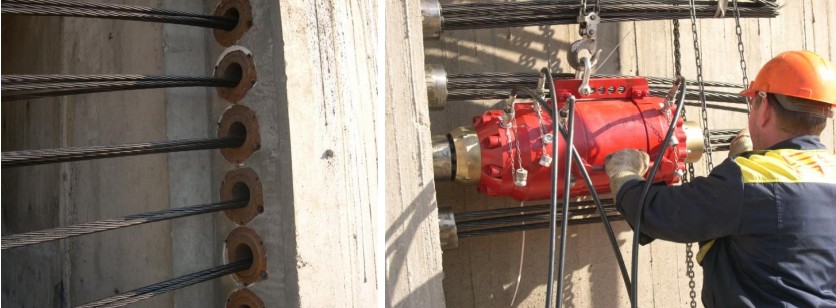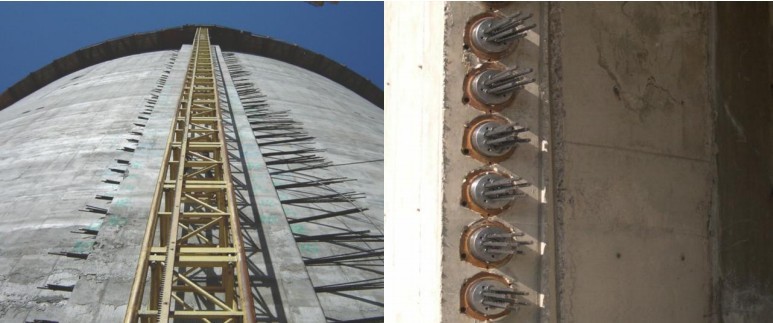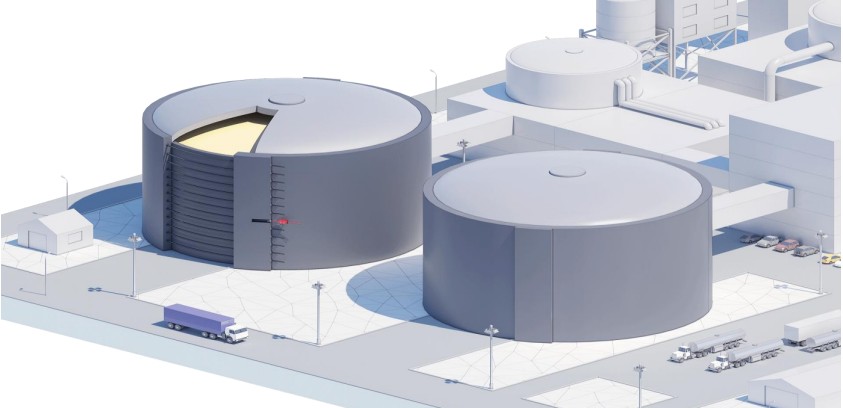


Pre-stressed concrete
Pre-stressed concrete is used to increase the load-bearing capacity of reinforced concrete structures and simultaneously reduce the thickness of walls and ceilings. To achieve the above mentioned goals, the tension of reinforcing ropes is used, which allows to reduce the consumption of materials and loads on vertical structures, to increase strength and service life.
The bundles of reinforcing ropes are located in closed channels and are subject to tension and anchoring with the injection of the cement mortar, which ensures the adhesion of the reinforcement to the concrete. The power of the beams used, determined by the nominal cross-sectional area of the ropes, their temporary tensile strength, controlled tension, the number of ropes in the bundle, is determined by the structural features of the construction, the conditions of its operation and design, and must comply with the requirements of the regulatory documents of the Russian Federation.
Advantages of prestressing in monolithic construction:
- Building of spans more than 8 meters.
- Reducing the thickness of the floor and / or beams.
- Increase in the net height of the room.
- Reduction of deflections.
- Reduction of loads from own weight on vertical structures and foundations.
- Increased crack resistance.
- Increase of durability and service life.
- Reducing the consumption of materials.
- Reducing the cost of construction.
Areas of application of reinforced concrete technology
- Industrial construction (factories, plants, monolithic silos).
- Transport construction (roads, line facilities, bridges, tunnels).
- Civil construction (apartment houses, public buildings).
- Military construction (military facilities).
- Hydrotechnical construction (dams, channels, bank reinforcement structures and devices, reservoirs).
- Agricultural construction (objects of agriculture);Commercial construction (shopping complexes, warehouses).
